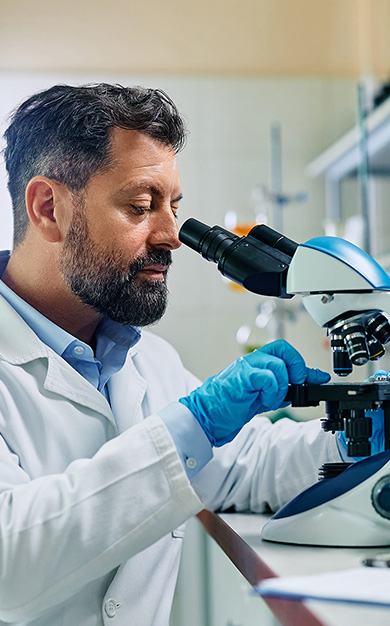Resources to Help You Live Well with AMD
Featuring
Ed Haines
Chief Program Officer at Hadley
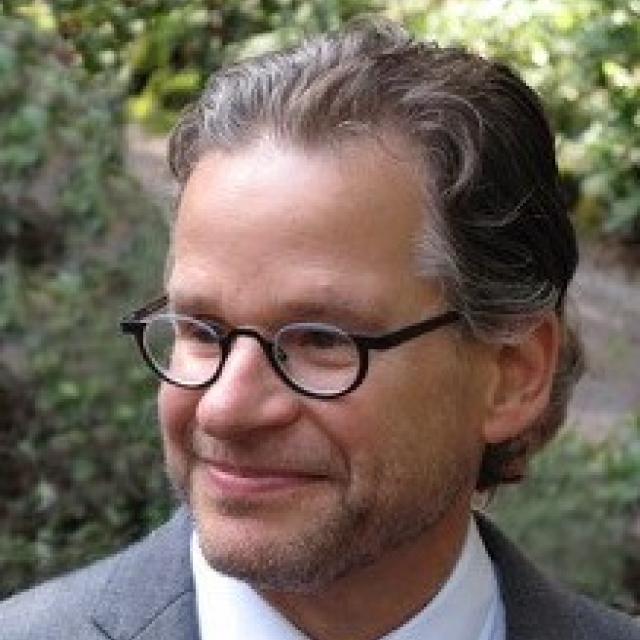

Ed Haines
Chief Program Officer at Hadley

After a macular degeneration diagnosis, the best way to adapt to vision loss is to learn new ways of doing things. Join us as Ed Haines discusses the resources available from the organization Hadley, which provides practical, social, and emotional support to older adults adjusting to vision loss.
Ed Haines is the Chief Program Officer at Hadley, a 100 year old organization dedicated to providing free programming that helps older adults discover news ways to do things made difficult by vision loss. Ed is a Certified Vision Rehabilitation Therapist and has served adults with vision impairments for 25 years, both in the public and private sector.
Download English Transcript PDF
MS. DIANA CAMPBELL: Hello, my name is Diana Campbell, and I’m pleased to be here with you today for today’s Macular Chat, “Resources to Help You Live Well with AMD,” or macular degeneration. This Chat is brought to you today by BrightFocus Foundation. Macular Degeneration Research is one of our programs at BrightFocus. We fund exceptional scientific research worldwide to defeat Alzheimer’s disease, macular degeneration, and glaucoma. And we provide expert information on these heartbreaking diseases. You can find much more information on our website, www.BrightFocus.org. I’m pleased to introduce today’s guest speaker. Ed Haines is the Chief Program Officer at Hadley, a 100-year-old organization dedicated to providing free programming that helps older adults discover new ways to doing things made difficult by vision loss. Ed is a certified vision rehabilitation therapist and has served adults with vision impairments for 25 years, both in the public and private sector. Ed, thanks so much for joining us today.
MR. EDWIN HAINES: Hi. Thank you, Diana. It’s a pleasure to be here, and thank you for inviting Hadley.
MS. DIANA CAMPBELL: Yeah, of course. We’re really happy to highlight the work that you do for the low-vision community. Let’s get started. Based on your experience as a low-vision rehab therapist, could you discuss some of the common daily living tasks that are affected by the different functional visual deficits that our listeners face?
MR. EDWIN HAINES: Yeah, sure. I’ll be happy to take a stab at that question. It’s a good question, but it’s also a really big question because, you know, macular degeneration and the visual deficits that sometimes accompany the diagnosis really affect almost every aspect of life, all sorts of daily living tasks. But I will talk about those a little more in detail. But I should stress at first that each person experiences vision loss differently. Even if they have the same diagnosis, even if they have the same types of visual deficits, everyone copes in their own way and at their own pace. That’s normal. That’s the way it should be. So, it’s important to think about, as I talk about these daily living challenges, it’s important to think that they don’t occur for everyone every time and in any specific order. And every challenge is faced according to a person’s needs and capabilities. It’s also really important to understand that most daily living challenges have some kind of solution. And the solution might not be for everybody, but it exists. We say this over and over in my profession: When you lose vision, with few exceptions, you can still do the things you want to do. You just might have to learn to do them differently. But it’s also important to know that there’s no one solution for all tasks. You’re going to need a lot of tools in your toolbox, and that takes time and patience to get there. It takes time to acquire them and patience to master them. So, I guess if I could have folks come with one takeaway from this presentation, it’s that it’s really, really important to be patient with yourself and be kind to yourself as you adjust to daily living challenges. Okay, let’s get to it.
MS. DIANA CAMPBELL: Thank you. Thank you for setting the stage in that way. That was the appropriate way to begin the conversation, and I appreciate it.
MR. EDWIN HAINES: So, I’ll proceed with the question if you’d like. You mentioned visual deficits, so I’ll touch on them briefly, just because you have to know what they are, because that helps us understand why some tasks become difficult. It also helps us think about where to start when we look for that all-important solution or series of solutions. First of all, the obvious visual deficit for macular degeneration is that loss of acuity. And that means loss of detailed vision. But the macula is the center of our vision. If that’s not working right, our sharpest vision is decreased, and if the macula is damaged, then visual acuity of 20/20 maybe isn’t possible any longer. And anyone who’s had to give up driving because their eyes are not quite as sharp as they need to be knows how important 20/20 vision can be. Then there’s visual distortion. If the retina is damaged, it may result in some wavy vision due to the stretching of the retinal layers, so sidewalks and stairs can appear uneven, unsafe to navigate; reading words can appear wavy; letters can appear wavy and make it tougher to read.
People often have blind spots, as well—it’s small areas of vision loss in their in their field of vision. The thing about that is, you could see something out of the corner of your eye, but when you look straight at it, the image falls inside the blind spot, and it suddenly disappears. This can really affect things like reading—parts of words may fall into the blind spot. And family members—this is interesting—family members don’t get how this works. Very commonly, I hear plenty of family members tell me about my clients, “You know, I don’t get it. They can see something on the floor out of the corner of their eye, but they tell me they can’t see my face. How does that work?” And that’s because of that blind spot in your central vision. Then, tolerating changes from light to dark is tough. Anyone who’s left the movie theater and into bright sunlight knows that your eyes need to take time to adjust. But for people with macular degeneration, that adjustment period can take a long time, many, many minutes. And then, that accompanies sensitivity to glare itself. It’s paradoxical with macular degeneration: You often need more light to see what it is you want to do, but you don’t want to have more light shining in your eyes because you’re increasingly sensitive to glare. The great thing about glare is that it’s easy to make tons of changes in your house to help with glare that don’t cost a lot and just usually involve rearranging some furniture. But you can change your light fixtures, you can use curtains, you can get new lamp shades. The general rule, again, is you need more light when you have macular degeneration, but it has to shine on the job you’re trying to do, not shine in your eyes.
Color vision can be affected. Depth perception is a really fragile visual function. You need two fully functioning eyes for ocular depth perceptions. And if you don’t have those, something you’ve been used to doing for a long time, like threading a needle or a lot of other skills, become difficult. I don’t have any depth perception myself. I can’t tell you how many pieces of glassware I’ve broken reaching for them and overreaching or underreaching and tipping them over and breaking them. I pour coffee, and I miss the cup. I sometimes trip on curbs or stairs because they’re either too far or too close. I’m not judging the distance carefully. So, depth perception, even if you have good acuity, if you’ve lost depth perception, it can really affect a lot of daily tasks.
And finally, I think when we talk about visual deficits, briefly, I want to mention something called Charles Bonnet syndrome. And those are basically visual hallucinations. They’re really not a visual deficit at all, but people sometimes think of them as such. If your visual system isn’t producing the same amount of images it used to produce, and if it isn’t working as hard as the brain is used to having it work, then the brain starts kicking in and fills that void, and it makes up images or recalls stored images for you to see. Kind of like if you’ve heard of phantom limb pain, where people feel pain in the limb that they no longer have. It’s same thing. It’s the brain just trying to fill the gaps. Unfortunately, that can be kind of frightening. If you’re not used to the idea that you may be getting some visual hallucinations and suddenly you have some, you may attribute it to some other cause, but it’s actually pretty harmless, although it can be frightening. But sure, if you do have any visual hallucinations, mention those to your ophthalmologist.
All right, I’ll dive into the original question about daily living tasks. So again, I could go on and on for hours about this, but it’s interesting. We recently did a survey at Hadley, and we were looking for overarching areas of interest for older adults who are facing vision loss. We’re planning basically to create some workshops to act as a guide for people to take them down the road to all the other stuff we have. We have a lot. But we wanted to give an overview centered along certain themes that people were interested in, so that gives them a place to start. And so, we surveyed hundreds of folks, and we asked them: What are your main areas of interest as you lose vision later in life? And three things really rose to the top. And they were reading, finding things, and getting around. Those were three common themes that people kept referring to over and over again. So, if I talk, Diana, about daily living tasks, I’ll center around those three themes and use those as points to jump off from.
So, let me talk about reading first. We all think of the obvious when we think about reading, right? We think about reading books. But there is so much more to this daily living task. When you can read print, you take for granted an ability that you use in your life all day long, and that is the ability to record and retrieve information, and by that, I mean writing stuff down and reading it later so you don’t have to memorize it. We do this all day—phone numbers, grocery lists, instructions, notes from a visiting tradesperson, etc. If you can’t write that stuff down and read it later, you have to commit all that stuff to memory or find another way to record it and retrieve it. There’s solutions to this, but having problems with reading is much more pervasive than just having problems reading a book. It can affect your ability just to get through the day doing stuff that normally was easy but now may be a little tougher. And we read all sorts of other things during the day. We read touchpads on our telephone; we read clock faces; we read checks and bills to manage our finances; we read money to make sure that we get the right change when we buy a cup of coffee; we read other types of mail, magazines, newspapers; and then we read screens on computers, mobile devices; and we read a lot of stuff that is flashed across our television screen. All of that stuff becomes challenging. And finally, most of us take for granted the ability to read directions on food packages, and we all know they’re already super small. So if reading standard print is a problem, now all of a sudden you can’t read directions on food packages, and that can reduce your options for meals. So, not being able to read the way we used to is more than just giving up your favorite novels. People can become isolated. Your choices are reduced. And then, of course, your stress is really increased because of those demands now made on your memory.
The second overall theme that people communicated to us was their frustration with finding things. And again, the obvious scenario we might think about associated with this topic is when we’ve dropped something, right—a pill, maybe—and we just can’t seem to find it on the floor, and that’s important. And if you have a pet that eats pills, that’s probably even more important; it’s probably a safety issue. But there are many, many more things that people use their vision to find every day. We use our vision to find the right settings on our stovetop or our oven controls. We even use our vision to find the right place to put down a hot pan on the kitchen counter. It’s interesting, Diana, one of our most popular workshops is kitchen knife safety. And when you lose some vision, perhaps it’s not as easy to find the right position of your hands or knife when you’re cutting something, so that is a safety issue. Vision’s also a tool we use to find items in the grocery or even find the entrance to the grocery. And gosh, finding the right medication out of your pill bottles is always a real challenge, and it’s certainly an important daily living task. I can’t tell you how many homes I’ve been in, and I’ve asked my clients, “Okay, how are you dealing with the pill situation? How are you keeping track of all your medications?” And they’ll point to a shoe box on top of the refrigerator that’s just full of bottles, and it’s increasingly difficult to find the right pill, the right time of day, in all that collection of bottles in the shoe box. So, finding things is an all-encompassing problem. And again, just like reading, if we start losing our ability to find things with our vision, that adds up to a sharp decrease in options. So, when we talk about daily living tasks that are made difficult, we’re not just talking here about a decrease in abilities, we’re talking about dealing with the loss of actual meaningful parts of our life. It’s not just about function; it’s about what brings us meaning. And then finally, people were really—
MS. DIANA CAMPBELL: I was just going to say that’s so important, and it goes back to your comment about loneliness and connection. Keep going, and then we’ll get to the next question. Thank you.
MR. EDWIN HAINES: Sure, and I think this is like just such a huge topic that I’ll probably go on and on, but I’ll try to keep it as short as possible. The final overarching theme that people were worried about was getting around. And of course, a lot of people are concerned about driving and losing the ability to drive. And we are, unfortunately, in the United States, a car-centric culture. There are not a lot of great options for public transportation here. And so, losing the ability to drive a car really has a lot of consequences. But getting around can also mean navigating safely in your house or negotiating stairs or finding your way in a dark restaurant or curbs or changes in terrain. If you combine a decrease in depth perception, and you also have glare sensitivity, now all of a sudden walking to the mailbox, that can become, depending on where it is, kind of an unsafe activity. And the consequence of … again, it comes back to losing things that provide meaning. If you can’t get around as easily as you used to, people stop going to the places where they have the support of communities, like places of worship or membership organizations. So again, it’s all about functionality then creating a loss of something meaningful.
And I did, this was really not about daily living tasks, but I did want to talk briefly about emotional adjustment. I think BrightFocus had a really wonderful podcast on emotional adjustment to vision loss just a few episodes ago, I think. And I’m glad you did, because you can’t separate what you can or can’t do from what you feel. And emotion and function go hand in hand. I’ve never seen anyone make real advances in one area without making equal advances in the other. I alluded earlier to there being solutions to every daily living task that’s a challenge, and that’s exactly right. But solutions are only going to work when people are emotionally ready to try them, and they won’t be emotionally ready until they have a real experience with a solution that works. It’s kind of like the chicken or the egg. That’s why when I do a home visit, I try as soon as possible to introduce my client to just one small success. Help them to find a new way to tell time by introducing a talking watch or showing them how to fold money so they can keep their wallet organized or putting some tactile dots on their stove so they can still find the right setting. And almost always, when people find out they still can do something they thought was lost to them, they start wondering about more possibilities. And when they’re searching for possibilities, they’re in the right place emotionally to try more solutions to all those daily tasks made more difficult by vision loss. And as I said right at the start, everybody goes along this journey on their own pace. And I’ll stop with the question right there, Diana. Thank you.
MS. DIANA CAMPBELL: No, you’re absolutely right, and I’m so glad you brought in the emotional aspect of vision loss to this conversation because it really is underlying to everything else that will that we are talking about, that we will talk about. You’ve done such a wonderful job of setting the stage for the myriad challenges that people are facing. And I do want to take a step back, and you mentioned a survey that you’ve done, and you mentioned Hadley, but why don’t you tell us, I think the bigger goal of today is to share with everybody listening the resources that you have. So, why don’t you tell us a bit about Hadley and your mission?
MR. EDWIN HAINES: Sure, I’d love to. Thank you for asking. I think you mentioned in your intro, Hadley’s 100 years old—a little over 100 years old, actually. It was founded in 1920 by William Hadley, who was an individual who lost his vision later in life. He taught himself how to read Braille, and then he decided to help his community of persons with vision impairments by teaching them Braille, as well, and he started a distance education Braille organization. We have changed and grown dramatically since then. Hadley is, I should say, based in North Shore, Chicago, but everything we provide is free of charge and is available to anyone, anywhere. We serve all 50 states and people in more than 100 countries. We’re right now focused on helping older adults discover new ways to do things made difficult by vision loss. We also want people to connect with peers and get as much social and emotional support as possible. We are a not-for-profit organization. We rely on contributions from individuals and corporations, etc., to fund our programs. And our mission statement is very clear: Hadley provides both practical and social emotional support to older adults adjusting to vision loss, empowering them to adapt and thrive. So, that’s really it in a nutshell. I certainly urge anyone who’s listening today who’s not a Hadley member to reach out to us and join our community. We have a lot to offer. It’s all free, and it’s all provided in your home, direct to you.
MS. DIANA CAMPBELL: Let’s talk about some of those offerings. You offer programs, including workshops, audio podcasts, and also discussion groups. Let’s kind of walk through each so people have a sense for what you cover.
MR. EDWIN HAINES: Sure.
MS. DIANA CAMPBELL: The category of workshops. Workshops, I assume, are a presentation online, and they cover various topics. Let’s talk a bit about that.
MR. EDWIN HAINES: Sure. And I’ll say right off the front, they’re not just online, however; they’re also in large print, Braille, audio, etc. You know, I mentioned in my preamble about daily living tasks, that there are solutions to every daily living task, and that’s what these workshops are. They are workshops on the different solutions that you can find to adjust daily living tasks that that have been made difficult by decreasing vision. We have almost 400 tutorial workshops on emotional adjustment to vision loss, all daily living tasks, technology solutions, Braille, recreation, and working. And they’re usually about 8 to 10 minutes long. They’re not very long. We want to keep our information bites in a digestible size, and people tend to really, really appreciate the help they bring. They bring specific help that is meant to pinpoint and target specific needs of our members. And here’s the great thing, also. Not only are they available in large print or audio, whatever media you need to access them. You don’t have to be online. But our workshops are also supported by a staff of vision rehabilitation professionals. These are certified individuals who have expert professional knowledge about all the topics that the workshops cover, so that if you watch a workshop and you have a question about something, a technology issue that you didn’t really understand, you can call us during business hours 5 days a week, and you can talk with a live vision professional right there, almost immediately. And that’s really a resource that is probably not very much available in the rest of the country. Vision rehab professionals are not very common, and they’re spread pretty thin. There’s very few times when you can pick up the phone and you can get expert help from a rehab professional right there and then. And they are there to support these workshops, so that’s certainly a value add for all of your listeners.
MS. DIANA CAMPBELL: Oh my goodness.
MR. EDWIN HAINES: Can we just talk about the podcast, as well?
MS. DIANA CAMPBELL: Yeah, let’s go ahead and talk about the podcast. And thank you for outlining that background to the benefit of the staff that you that you have available for folks. We get questions all the time about smaller things that might not be a topic for a whole entire Chat—or certainly, we always respond by email—but to point people to a resource where they’re going to get an expert opinion is always really the best case scenario. So, let’s get into the podcast.
MR. EDWIN HAINES: Sure, I will. Absolutely. But yes, if you have people that call and say, “You know, gosh, I’m trying to work something out on my iPhone,” and you don’t want to have a whole program about that, just send them to Hadley, and we’ve got someone. We’ve got an adaptive technology specialist ready to work with them right away. So, please send them our way. Okay, podcasts. It’s often really helpful just to hear the voices and stories of people who are experts in the field of vision loss, either through training or experience. So to that end, we offer two podcast series. We have one called, “Hadley Presents: A Conversation With the Experts,” and that’s a 20- to 30-minute podcast on all aspects of living with vision loss. And that’s usually with a conversation with professionals in the field, with experts, or with people sharing their personal experience on a particular topic. They’re really enjoyable to listen to. Our podcast host, Ricky Enger, does an amazing job. We had several recent episodes just by way of example are “Guide Dogs and Vision Loss,” using the Reader Advisors service with the National Library Service, and then “Vision Loss and Charles Bonnet Syndrome”—I alluded to that earlier. We have another podcast as well. It’s called “Insights & Sound Bites,” and this is really a wonderful idea. It wasn’t mine, so I can say that. It was created to give our members a chance to share their personal stories of their vision loss journey. They’re about 4 to 5 minutes long, and essentially, it’s a vehicle for people to help each other out. Hearing someone else talk about their experience is a perfect way to connect. It gives hope, and it helps people feel they’re not alone, so you can tune into that podcast, and you can listen to another Hadley member talk about their vision loss journey. And it’s just great to hear that information from a peer rather than a professional.
MS. DIANA CAMPBELL: If you could actually just really quickly, these are podcasts. What platforms? Are they on Apple and Spotify? Where can people find these podcasts?
MR. EDWIN HAINES: Any podcast streaming service—all the major ones. And then also, if they want to sign up for our podcast, they can call us, and then we’ll send them an email alert every time a new one is published.
MS. DIANA CAMPBELL: Oh, that’s great.
MR. EDWIN HAINES: And the link.
MS. DIANA CAMPBELL: Wonderful.
MR. EDWIN HAINES: We also have discussion groups. We have 10 of them. They meet live by Zoom, and they’re centered around various topics, including tech, cooking, crafts, and others. If you’re new to Zoom and you still want to join us, you can use your phone if you’re uncomfortable using Zoom. And if dialing your phone is difficult, we’ll even call you, just like you called folks today into this meeting. The discussion groups are a lot of fun. The recordings of them are also available. A lot of people like to listen to the recordings, so they’re also something I recommend. And we have two newer programs, Diana, that I’d also just like to give a shout-out to. One is our peer-to-peer program, called Peer to Peer. It’s a wonderful way to connect with others. If you’d like to have someone to talk now and then, someone who shares your diagnosis, maybe shares some of your life experiences, maybe someone who’s a bit farther along in the adjustment process, we can match you with another Hadley member who’s also looking for support, and then you take it from there. A lot of folks have talked about how meaningful their peer relationship has been. And we’re just nearing the launch of some virtual support groups, as well, so that’s very exciting.
MS. DIANA CAMPBELL: That’s wonderful, and I know there will be interest in all of those. Would you mind sharing … we’ve gotten a couple questions on the Chat here to share your phone number and also web address, so people can find you.
MR. EDWIN HAINES: Sure. Our phone number is (800) 3234238.
MS. DIANA CAMPBELL: Wonderful.
MR. EDWIN HAINES: And we have some wonderful people at our help desk standing by to help guide you through our process. And there isn’t much. We try to be as barrier free as possible, so literally within a minute or two after you call, you can be signed up and guided to any workshop you’re interested in or a discussion group or a peer-to-peer program, whatever you’d like to do.
MS. DIANA CAMPBELL: Wonderful. It’s like case management. And that’s not a word we’d like to hear, but there’s just somebody available willing to guide you through this whole process and figure out the right solutions for you, and I think that’s so important as you’re going through such an emotional experience and coping with the loss of so many important things that we’ve just taken for granted over time. I’m going to go into a couple of questions that kind of cover the broader topics that you have outlined. So I’ll do probably three of those, and then we’ll close. So, we’ve got one person who writes in and says that she lives alone and has difficulty removing facial hair and cutting her fingernails, or his fingernails. How would somebody with this challenge find help with you, or what recommendations do you have?
MR. EDWIN HAINES: Well, we do have two workshops on those very topics, so those are available at Hadley, and please call and request them. I can just tell you as a vision rehab therapist that trimming your nails and removing facial hair is going to require you to give yourself some patience and time, because you’re going to have to start looking at possibly a tactile way, in other words, doing it by touch. But if you have some functional vision, the first thing I would advise is, will magnifiers help? Is there some kind of stand magnifier that you can hold your finger under that will help you see better? Have you tried a magnifying mirror that helps you see your face more clearly? If magnifiers don’t work, then it’s time to start thinking about how to do this by touch. For shaving, for instance, you can use your other finger to act as a guide, a level that you can line your razor up with as you shave down your face. It’s just going to take a little more time, and time for you to develop a system. Same thing with trimming your nails. We’re all used to just trimming our nails one and done, right? But if you can’t see them as clearly, it’s better to start trimming your nails just little bits at a time, feel for where they are, and then trim off a tiny bit more until you get more confident. Some people use a nail file as well.
MS. DIANA CAMPBELL: Sure, that makes sense. For another topic that you mentioned, which is a huge, popular topic: reading. “I’m an avid reader, and I’m interested in ways to help me read other than large print or audiobooks.” So again, with your resources and your expertise, what would you suggest to somebody who still wants to have that feeling of reading but has kind of exhausted the traditional large print or audiobook options?
MR. EDWIN HAINES: Sure. There are lots of ways to keep reading. And you know what? They all have their place, and they’re not all for everyone. And your questioner said they really would rather not go toward audiobooks. If you want to continue using your vision to read and you don’t really care for large print, there are options for magnifying the text of your book so you can read it in ways that you’re used to. There’s optical magnifiers, like dome magnifiers. There’s electronic magnifiers that you can use. And Hadley has workshops on all of these. You can also take the approach of reading on a computer or a phone. There are a bunch of ways to do that. There are books that are done with a human narrator, but there’s also something called text-to-speech, and this will read your text out loud. It uses kind of a computer voice similar … maybe you’ve heard Siri or Google Assistant. That works great with apps like the Kindle app, which is Amazon’s book service. You can buy book titles from there. There’s even free ones. And they can be read out loud to you. You can also enlarge the text using the low-vision features built right into the Kindle device. If you’d like to use the library and you’re used to checking out books, you can do that digitally now, too. I think there’s an app—it’s called Libby—that a lot of libraries use. You can borrow a digital copy of a book and then use the features in that app to make the text more readable or, again, use the low-vision features on your device to have the material read out loud. In terms of resources, it’s a great time to mention one of our discussion groups is Hadley’s Book Nook. And in that group, we’ll sometimes choose a book or a book genre and discuss that, but other times we just explore different ways to read. So, people will share what works for them, what doesn’t. Sometimes people are struggling to make that transition from reading print to reading a book with audio, and you can get some great tips directly, just from other people who’ve been in that same situation. And then finally, because we’re Hadley, I’d be remiss if I didn’t mention that also another option for reading is Braille. We have some wonderful Braille programs. You don’t have to read Braille so that you’re reading a whole Braille novel. You can start out by learning the simple Braille code so that you can label your medications or organize your kitchen cabinet, etc. Braille is certainly a wonderful option, and a lot of people have a lot of fun with it, so I recommend Braille, as well.
MS. DIANA CAMPBELL: I’m so glad you mentioned that. The last broader topic, and I don’t expect you to have quick, easy answers—perhaps this is the time to point to resources—but technology is such a huge topic.
MR. EDWIN HAINES: Yeah, sure is.
MS. DIANA CAMPBELL: And yeah, it’s kind of, like you said with people’s eyes, not only is every person different, but every eye is different. And probably the same holds true for your comfort level with technology, learning new technology, exploring existing technology, and I think it would take probably more than one additional Chat to cover every question that we might receive about technology. But could you talk a little bit for those who are struggling with—perhaps you have an Android or an iPhone user who is relatively comfortable with their phone but doesn’t know how to access accessibility settings, and then the spectrum all the way to somebody who is not accustomed to using a computer and is trying to figure that out for the first time so they can access some of these services—what workshops or services that you offer would you recommend for people at different levels of technology readiness?
MR. EDWIN HAINES: Sure. We have workshops for every level of tech user. That’s from the basic beginner on using basic computer systems all the way up to advanced features on your iPhone or your Google device. And the great thing is we have some technology experts who can help guide you. They can talk to you, find out what it is you want. First of all, what you want to do with technology, and then what you want to use. If you have vision, how do you want to use your vision with technology? And then they can help you take it from there and identify where to start. It’s a huge topic, and it is overwhelming. If you’re not used to technology or you don’t use it much, there’s a big learning curve, so this is definitely an area where it would really help just to give one of our experts—our specialists—a call, and they can help you get started.
MS. DIANA CAMPBELL: What a wonderful service. I’m picturing people that I know that might have simple questions, and they just can’t seem to figure them out, so that personal angle to it, the personal approach to it, is so important, and it’s such a wonderful thing that you offer. We’ve gotten another request, if you wouldn’t mind repeating your phone number and your website information.
MR. EDWIN HAINES: Sure.
MS. DIANA CAMPBELL: And then we’ll kind of close after this.
MR. EDWIN HAINES: All right, sounds good. The phone number is (800) 3234238. And our website is www.HadleyHelps.org.
MS. DIANA CAMPBELL: Yes, thanks for spelling that out, and thank you so much. You’re just such a wealth of information, and I know we’ve only kind of scraped the tip of the iceberg at this point, but the good news is that that folks have a wonderful resource in you that they can begin to ask their questions, and certainly, we welcome all our listeners to reach out to us, as well, if they’re looking to be pointed in the right direction. And also to our listeners, thank you so much for joining us today, and I hope you found today’s Chat helpful. Our next Macular Chat will be on Wednesday, May 29, and the topic will be about the current treatment landscape for geographic atrophy. Ed, before we conclude, are there any final remarks you’d like to share with the audience?
MR. EDWIN HAINES: No, other than to certainly encourage people to give us a call and become a Hadley member. We’d love to have you to be part of our community.
MS. DIANA CAMPBELL: Thank you so much. It’s such a wonderful offering for folks who are coping with so many different losses all at once, and I really appreciate it. Thank you, again, to our guest speaker and to our listeners for joining us today. This concludes our Macular Chat. Thank you, and talk to you next month.
Other resources mentioned during the Chat include—


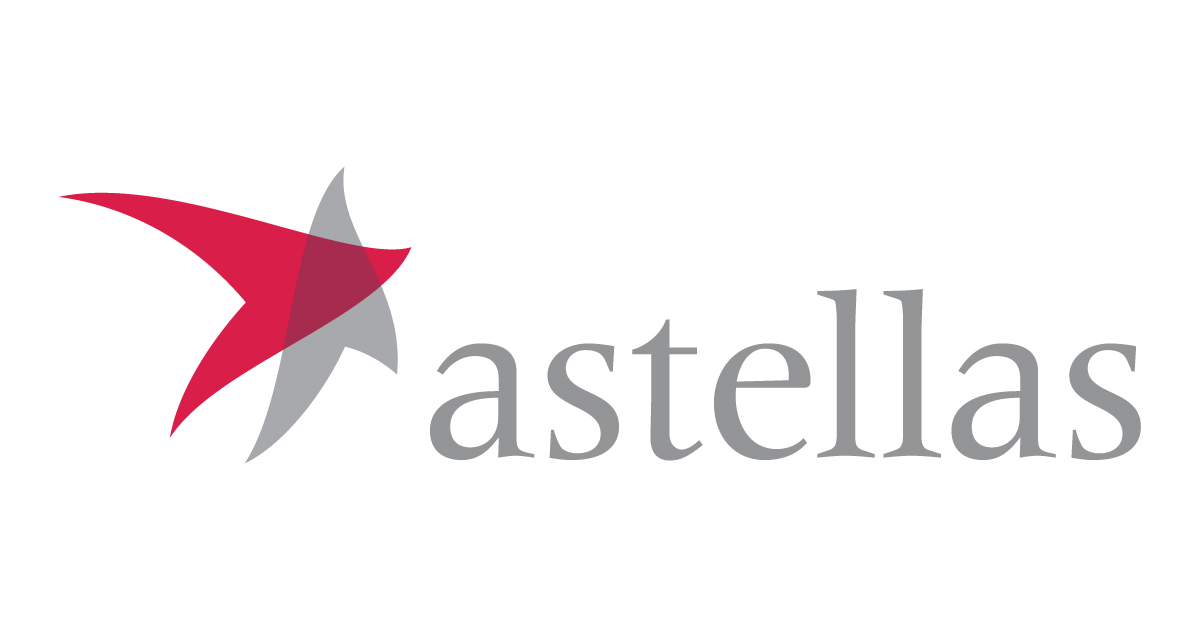

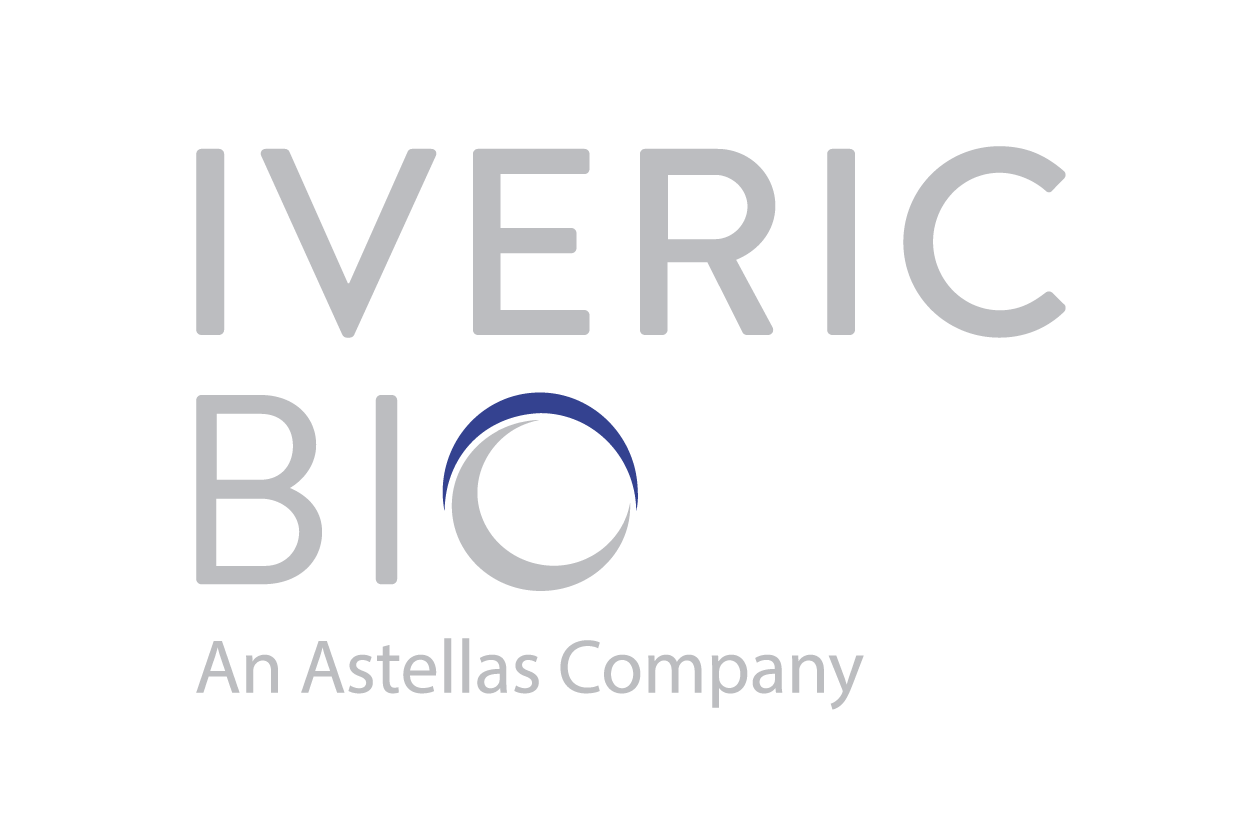


BrightFocus Foundation is a premier global nonprofit funder of research to defeat Alzheimer’s, macular degeneration, and glaucoma. Since its inception more than 50 years ago, BrightFocus and its flagship research programs—Alzheimer’s Disease Research, Macular Degeneration Research, and National Glaucoma Research—has awarded more than $300 million in research grants to scientists around the world, catalyzing thousands of scientific breakthroughs, life-enhancing treatments, and diagnostic tools. We also share the latest research findings, expert information, and resources to empower the millions impacted by these devastating diseases. Learn more at brightfocus.org.
Disclaimer: The information provided here is a public service of BrightFocus Foundation and is not intended to constitute medical advice. Please consult your physician for personalized medical, dietary, and/or exercise advice. Any medications or supplements should only be taken under medical supervision. BrightFocus Foundation does not endorse any medical products or therapies.
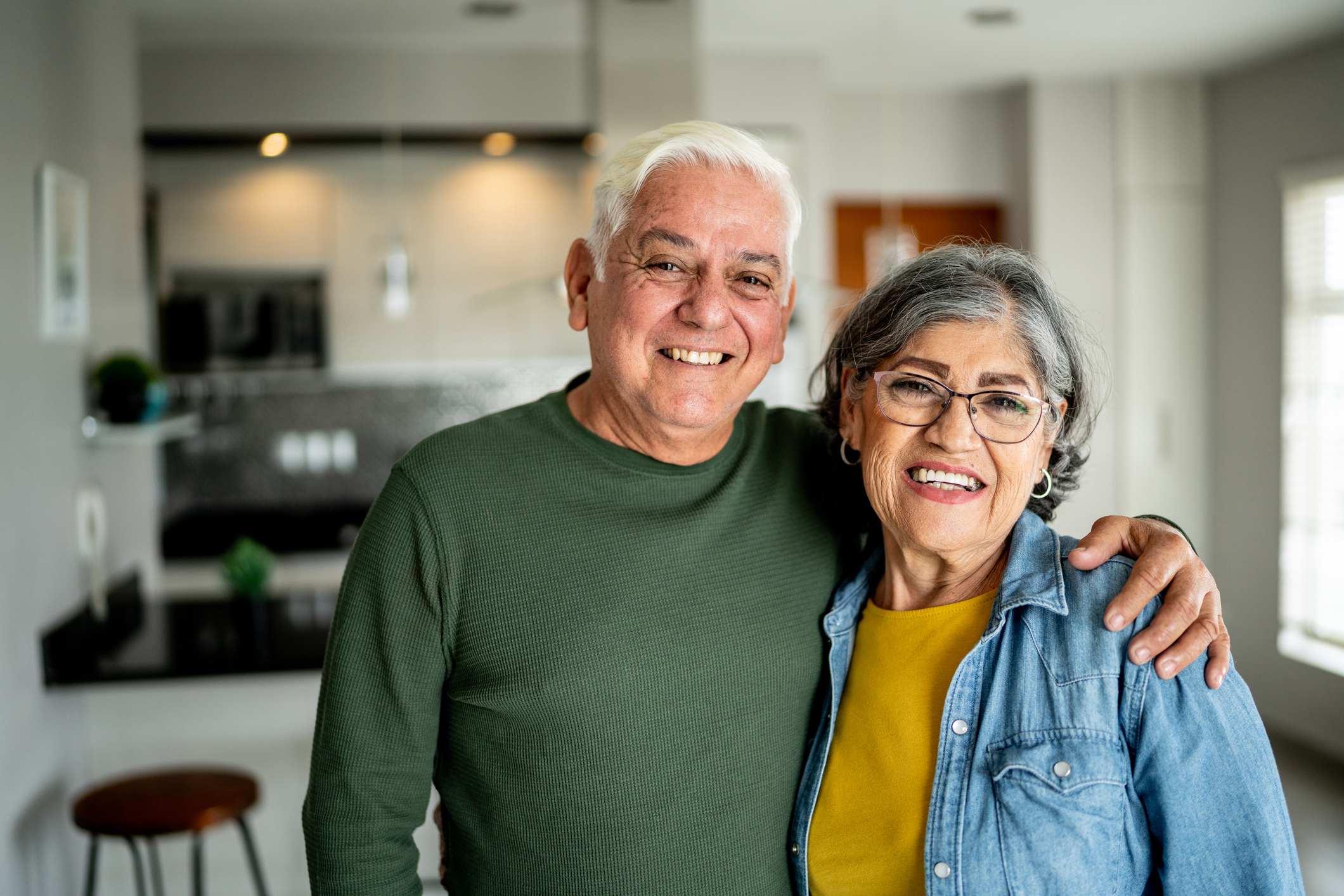
In recognition of National Caregivers Month, this episode explores the vital role of those who support individuals living with vision loss—whether family members, professionals, or volunteers.

Dr. Jeffrey Stern and Dr. Sally Temple, Principal Investigators and Co-Founders of the Neural Stem Cell Institute, will explain what stem cells are and share the latest updates from clinical trials.
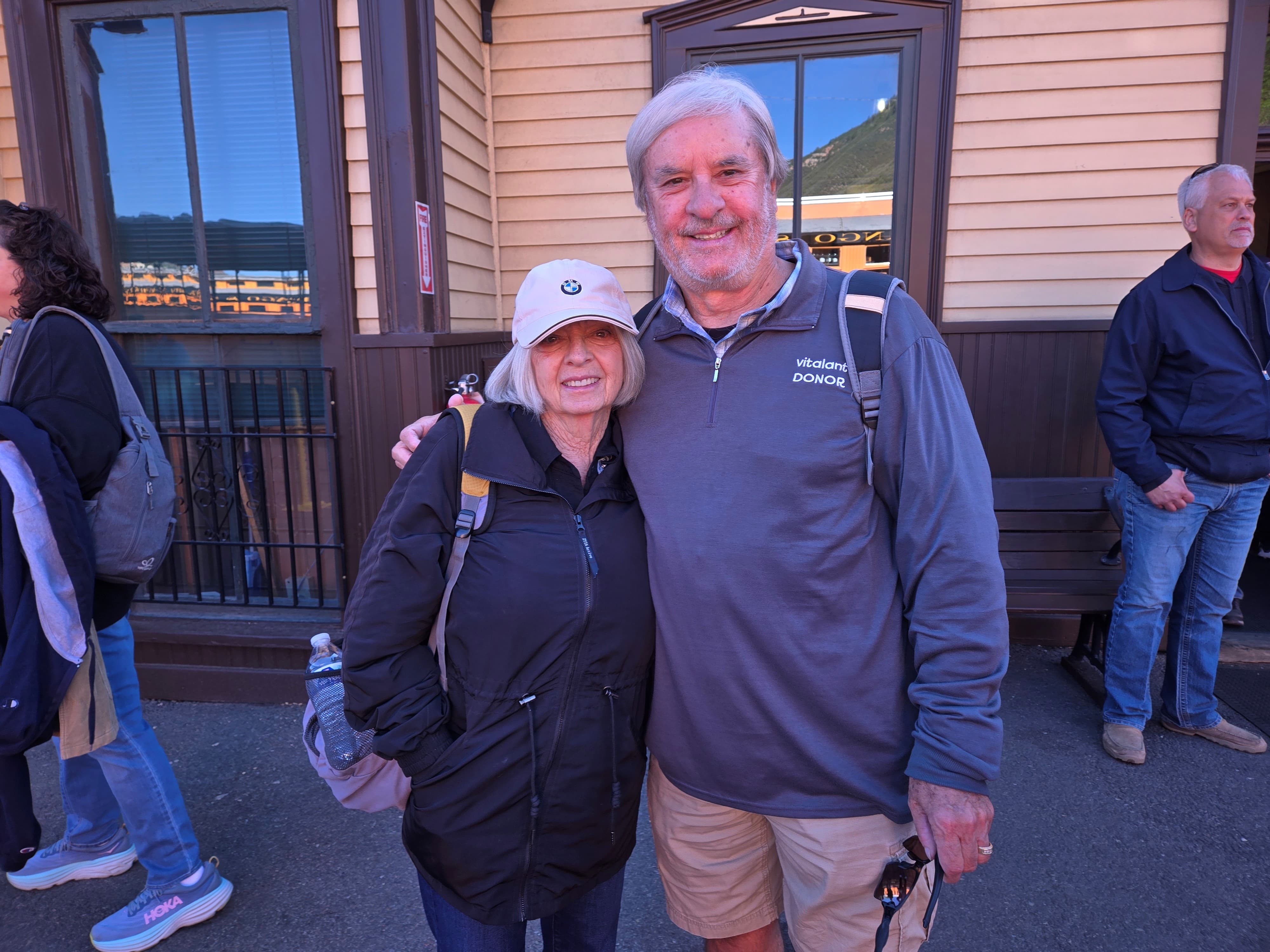
Dave and Leanna Palmer share their commitment to supporting Macular Degeneration Research.
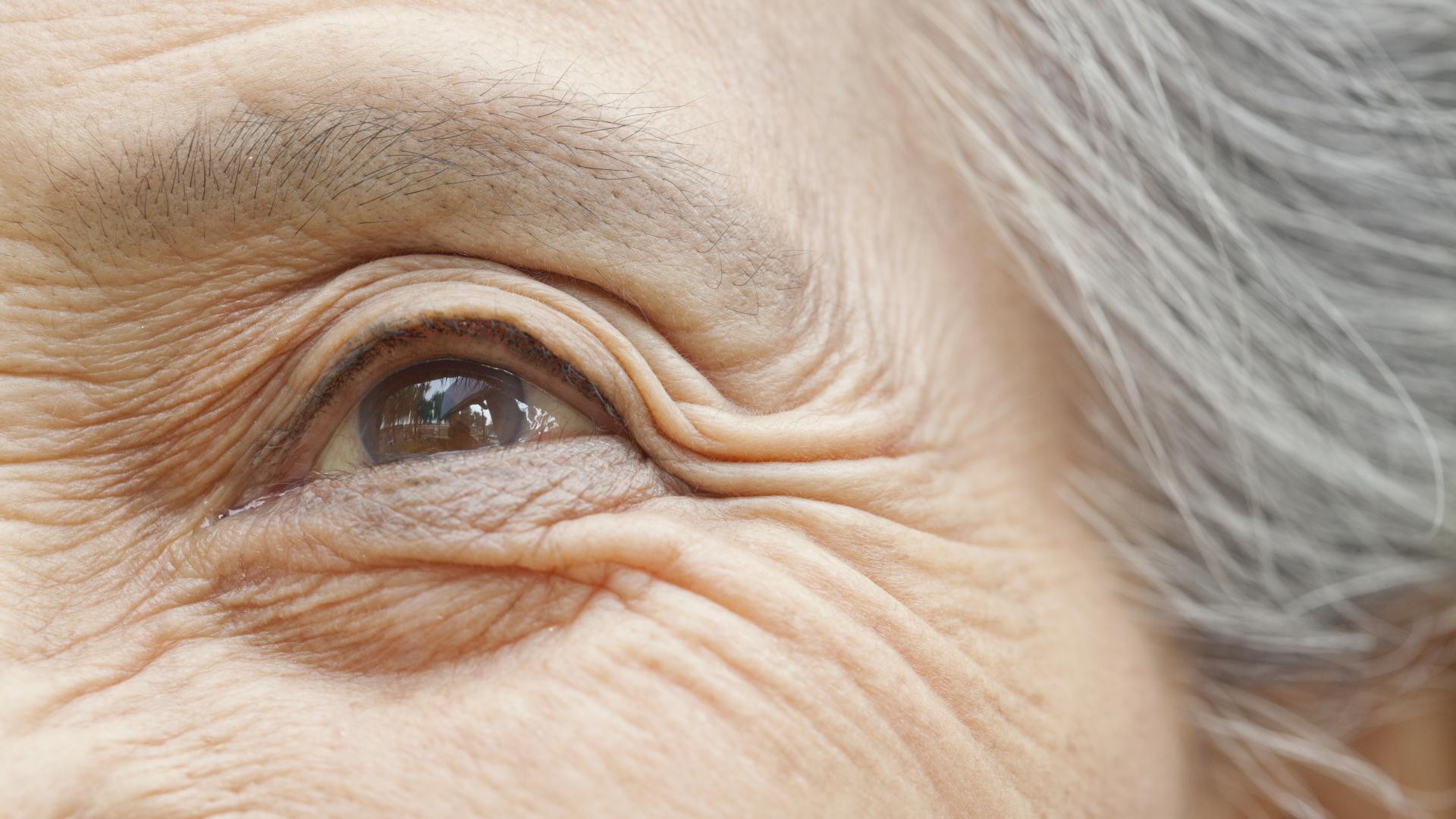
Join Dr. Sara Fard, a retina specialist at Illinois Retina Associates, as she explains the benefits of sustained GA treatment, including slowing the rate of vision loss, protecting retinal tissue, and supporting daily visual function.
Help Fight Macular Degeneration and Save Sight
Your donation helps fund critical research to bring us closer to a cure for this sight-stealing disease and provide vital information to the public.
Donate Today